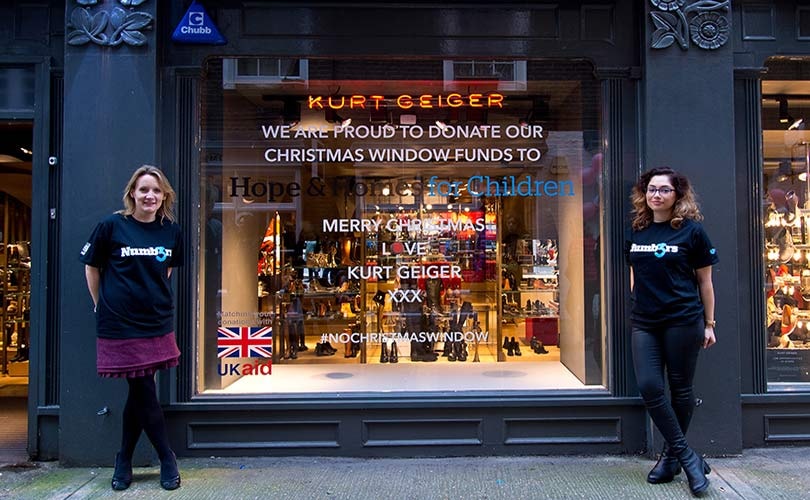“Stylish”, “personalised” and “innovative”
are not often words associated with wheelchairs - instead, they’re
often seen as “functional”, “necessary” and “practical”. But for many of
those with disabilities, day-to-day life is dependent on, and
constructed around, the use of their chair.
Fiona Jarvis, founder of Blue Badge Style
That’s
why groups such as Blue Badge Style - a website that campaigns for
modern and stylish design in the production of mobility equipment - are
trying to bring alternative designs for wheelchair users into the
mainstream.
Fiona Jarvis, founder of Blue Badge Style, has
multiple sclerosis and uses a wheelchair herself – and says that she
doesn’t want to lose her identity just because of this. “The fact that
you’re in a wheelchair doesn’t mean you’ve lost your sense of style,”
she says. “It becomes more important in fact – you can control style,
while you can’t control your body.”
Jarvis isn’t the only one who thinks wheelchair designs
need to be improved: she carried out research to determine what regular
users of her website thought of their equipment – and 80 per cent said
they were always disappointed with the equipment they bought.
Three
quarters of this 80 per cent said that there was not enough choice.
Many also wanted a try before you buy system, as well as stylish
equipment that didn’t break the bank. “Respondents have said that
there’s no innovation and that everything’s very functional and
institutionalised,” Jarvis says. “There needs to be more choice in terms
of style and colour.”
So now, Blue Badge Style has partnered
with product and industrial design students from Brunel University on a
project called “Style My Chair”, where the students have come up with 22
concepts for wheelchair improvements and accessories, based on the
answers to the survey. People can now vote online for which concept they
would like to be made into a working prototype.
Concepts fall under three categories of ‘Bag’,
‘Accessory’ and ‘Innovation’. ‘Bag’ includes BackBackPack, a new
wheelchair backpack with a side pocket that aims to be more stylish and
secure than current wheelchair bags.
‘Accessory’ includes ideas
such as personalised patterned wheel covers, a new rainproof mac and a
honeycomb cup holder, which can adapt to fit any sized glass.
The
Innovation category presents new technologies for comfort and
convenience, such as Blueberry Lounge - a recycled car seat fitted to
the chair for storage and comfort, Commute Gripper, a handle to aid
comfort on long journeys, and One Hand Power, enabling users to wheel in
a straight line using only one hand.
Current choices for
wheelchair users are limited, Jarvis says: “Electric wheelchairs are
horrible and chunky. Battery technology has come a long way but it seems
to elude manufacturers of wheelchairs. Also, while children’s chairs
come in trendy, bright colours, they’re always black for adults.
Manufacturers just look at pure functionality - but I have to sit in my
chair all day.”
It can also be difficult and inconvenient having to use
both hands to wheel on a manual chair, and hard for wheels to grip in
wet weather, she says.
Ian Harris is a senior designer at
Motivation, a group that focuses on innovative wheelchair design. He
says that issues also arise in balancing the person’s ergonomic seating
position with the design of their chair. “It’s really tough positioning
bodies in a wheelchair so that the person can sit comfortably and get
their stresses and strains out,” he says. “You’re trying to prevent
worse deformities happening through time. You can build in adjustments
to control problems as the person grows – but this costs money and time.
The human race is very varied, so equipment has to be fairly adjustable
or tailored, which can be expensive.”
But Harris also says that
small additions to wheelchairs can make a huge difference. “We once
attached a small table to the chair of a girl with cerebral palsy,” he
says. “It was a really simple communication board, so that she could
point at things such as food and drink. Her mum was completely blown
away because she had thought that her child couldn’t communicate, and
suddenly she had a voice.”
Motivation has also previously
implemented designs such as a three-wheeled wheelchair, to aid balance
and direction, and a bigger base and front wheels, for use on rough
terrains. The company is also in the process of creating a three-wheeled
folding chair.
“Style My Chair” was put together by Brunel’s Co-Innovate
programme, which aims to increase collaboration between universities
and businesses through design and innovation. Brunel University’s MSc
Integrated Design programme director Stephen Green, who is working with
the students on the project, says that the partnership will be
beneficial for his students as well as for wheelchair users. “It’s
encouraging our students to think about wheelchair users from the
perspective of wheelchair users,” he says.
“Fiona tells a very
compelling story about how she wants to lead a normal, fashionable life
and that existing wheelchair products just don’t meet that need,” he
says. “Why can’t the wheelchair make a positive, personal statement
about the user? We thought this project was ideal both in terms of
helping our students to think creatively about this challenge, and in
developing their skills to think more empathetically about particular
users.”
According to votes so far, the concepts that are currently
most likely to be developed into a working prototype include the
backpack, rain mac, cup holder and wheel covers. To view the full list
of ideas and vote for a concept in the “Style My Chair” competition,
visit the Blue Badge Style website.


